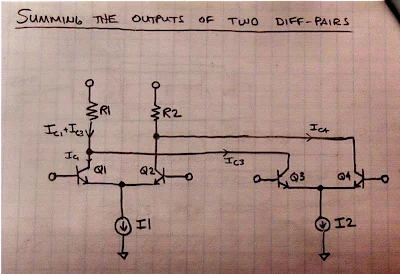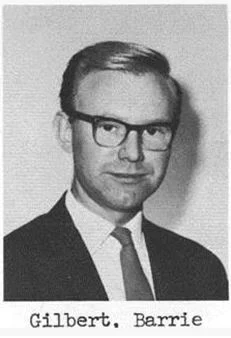Podcasting since 2005! Listen to Latest SolderSmoke
Friday, December 3, 2021
Alan Wolke W2AEW: YouTube Silver Play Button Award, and ARRL Hudson Division 2020 Technical Achievement Award
Thursday, December 2, 2021
Peter Parker VK3YE Inducted Into QRP Hall of Fame
Thanks to VK3HN for alerting me to this.
Wednesday, December 1, 2021
KI4IO in India and Nepal, and Discrete Homebrew Gilbert Cells
While in India I was licensed at VU2LHO and worked a lot of US hams with a 135' flat-top and open-wire feed. I had the antenna strung between two bamboo towers atop the embassy housing 2nd-story roof-top. I also put up a 3/8 wave vertical on the roof for 10 meters. That little antenna had 110 radials stapled into the roof screen and worked very well! The rig was a HW-101. I was in Kathmandu, Nepal from early 1980 to late 1982. I could not obtain a license there, but became good friends with Father Moran, 9N1MM, and would often spend time up at his place putting his Drake station on CW. Pretty cool being real DX! Back in the states in late 1982.
Tuesday, November 30, 2021
Putting a Barebones Superhet on 17 Meters with an NE602 Converter (Video)
Sunday, November 28, 2021
How To Understand the NE-602 and the Gilbert Cell Mixer
Saturday, November 27, 2021
The Galway Radio Experimenters Club
Wednesday, November 24, 2021
Gloria -- A Netflix Series about a Shortwave Broadcast Station in Portugal
Rarely if ever will we come across a high quality NETFLIX series built around a shortwave broadcast transmitter. But that is what we have in Gloria. It is really good. We were especially interested in it because we lived in Portugal for three years. In addition to all the intrigue and drama you will catch glimpses of broadcast antennas, big transmitting tubes, and one out-of-focus shot of what appears to be a Hallicrafters receiver (SX-42?)
More info here:
Here's the NETFLIX link:
https://www.netflix.com/title/81073977
Thanks to Thomas K4SWL of SWLing Post for the heads up.
Tuesday, November 23, 2021
Jagadish Chandra Bose
Jagadish Chandra Bose
Sunday, November 21, 2021
KG7TR's Magnificent 75S-2B Receiver -- Tubes, an Si5351, an Arduino, a Bit of Collins, and a Bit of a Drake 2-B
I was led to this magnificent receiver by the very humble 6U8 tube. Scott WA9WFA and I have been learning (mostly from Grayson KJ7UM) that the much used and sometimes loved 6U8s (three of them in our "Mates for the Mighty Midget") might be a bit long in the tooth, old even by Thermatron standards. I was worried when I remembered that my Drake 2-B has a 6U8 in it -- V2, the first mixer. So I Googled for more info and was led to this amazing receiver, a 2018 creation by KG7TR. How did we NOT see this for almost four years?
Here is more info and pictures:
http://www.kg7tr.com/75s-2b-receiver.html
Here is Mike's write-up of the project:
Mike KG7TR's web site:
As for the 6U8s, well Grayson says the tube has been getting something of a bum rap. And KG7TR has two of them in this receiver, so I will obviously have to give the 6U8 another chance.
--------------------
I didn't know that Lew McCoy had his own crystal and crystal filter company:
Saturday, November 20, 2021
The Double Crystal Lattice Filter in the Swan 240 -- Smoothing it out with a NanoVNA
Wednesday, November 17, 2021
SolderSmoke Podcast #234: PSSST, KWM-1, VHF Woes, Mighty Midget, TinySA, 17-12 Dual-Bander Advice Needed. MAILBAG
PSSST Super Simple SSB -- 7 Transistors. Switching IF Module:
DC RX.
KWM-1 Resurrection "Shame Shelf".
How to make things work:
Diode Switching or Relays?
National Receiver.
Bill's Bench
Farhan's Talk to RSGB got me thinking of VHF 2 meter AM.
2 meter Benton Harbor lunchbox madness. SuperRegens Super Strange.
I broke my Maplin AF Sig Gen in the process. Fixed it.
Playing with MMMRX again. Put in 6 kHz ceramic filter. Sounds great SSB and AM.
Swept IF with noise, TinySA, and NanoVNA. Need better noise gen.
Mod to listen with TinySA (on blog).
Thinking of 17 meter /12 meter Dual-Bander IF around 21.4, VFO around 3.41 Mhz. Thoughts?
Sweeping double half lattice filter from Swan 240. UGLY.
MAILBAG:
--- ROOTS OF MAILBAG: Radio Moscow, Havana Cuba, HCJB, others.
-- Thomas K4SWL of the SWL Post: Could have been worse! Stairbag?
-- Drew N7DA worked Wes W7ZOI in Sweepstakes. FB.
-- Peter VK2EMU The movie Frequency and the Magic of Heathkits. Good, but not that good!
-- Thomas KK6AHT! Our old friend. Minima! Now has a young son! FB
-- Chuck WA7ZZE Saw QST profile. Sympathizes with Two-er trouble.
-- Tim M0CZP. Spell corrector. Vatican Diodes. Infallible!
-- Ramakrishnan VU3RDD Working on a NORCAL and a noise cancellation arrangement.
-- Skip NC9O said I was 40 Hz off on 17. But he had a reason to KNOW!
-- Steve K9NVD Glad he's a listener.
-- Bob KY3R Novice Nostalgia. Should he use 75 watt bulb for dummy load? Yes!
-- Todd K7TFC Video about why solder smoke goes into the face.
-- Anthony VU3JVX Homebrew Antuino. I ask for help in moving freq to 450 kHz.
-- Jack NG2E Building Pete's DC RX.
-- Scott WA9WFA HBR-13 and MMMRX.
-- Stephen 2E0FXZ also got a FT-101 VFO.
-- Bob K7ZB on the air with 56 mW and a big antenna.
-- Dean AC9JQ Retired.
-- Allan WA9IRS Right to Repair update.
-- Farhan Invited us to Lamakaan ARC, Dec 11 or 12. Will be on QO100 Satellite Live!
Happy Thanksgiving to all who celebrate this holiday!























































